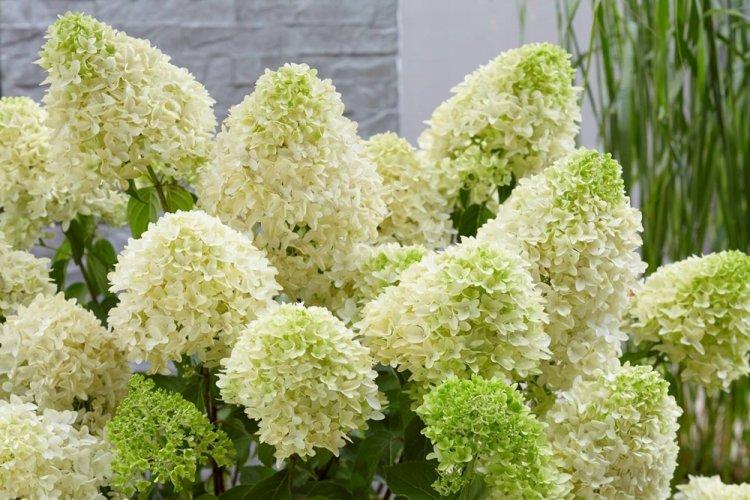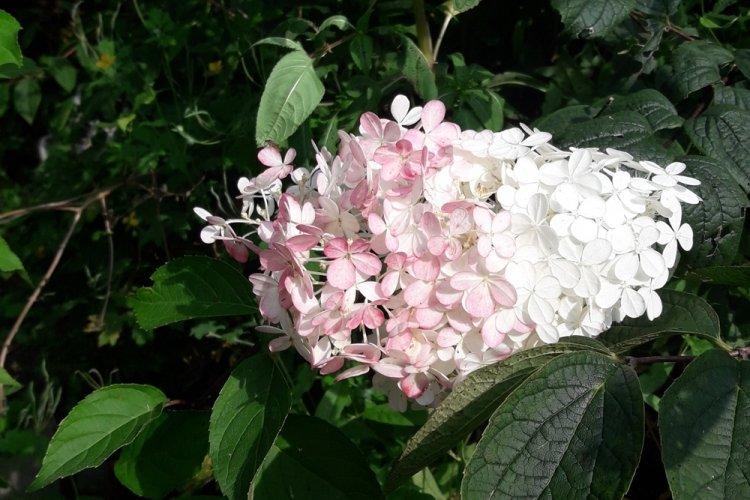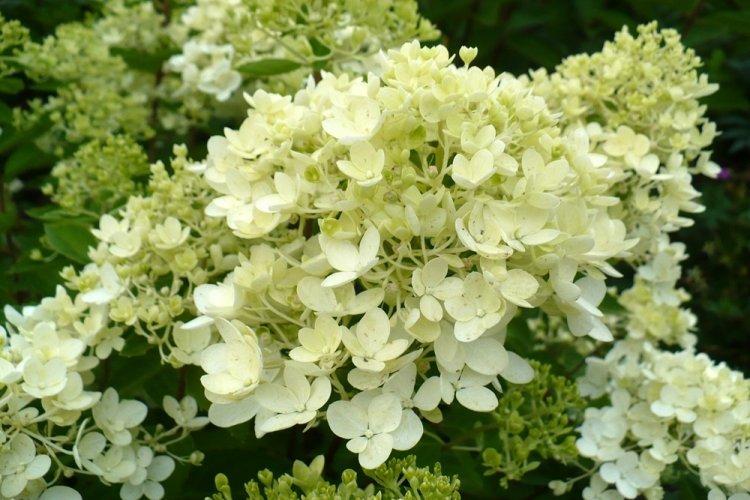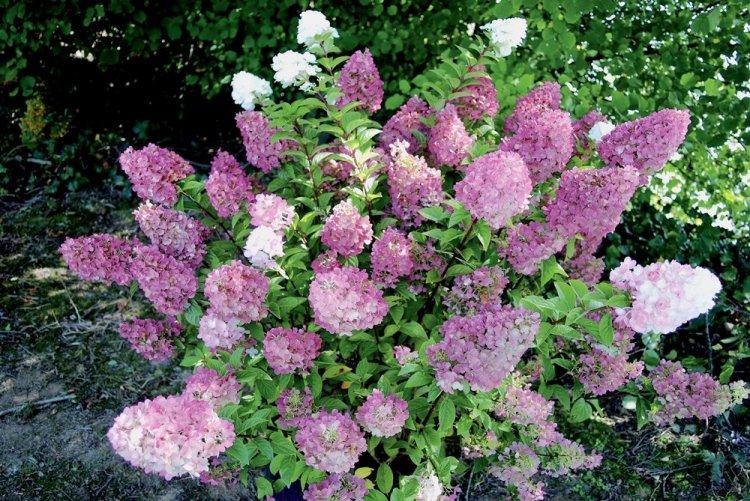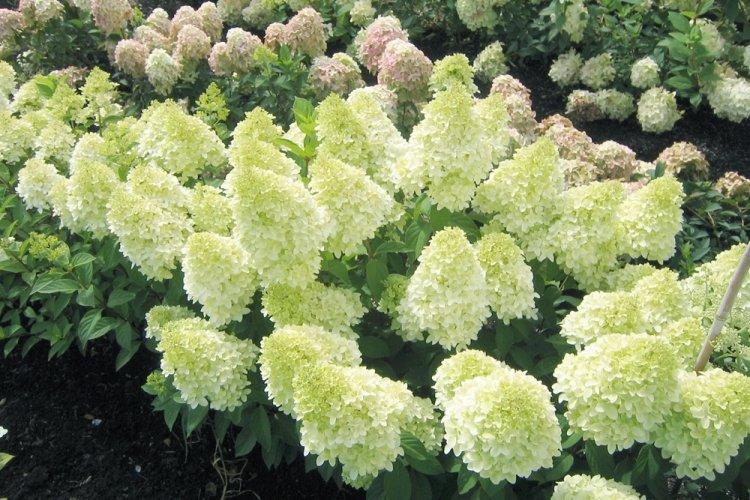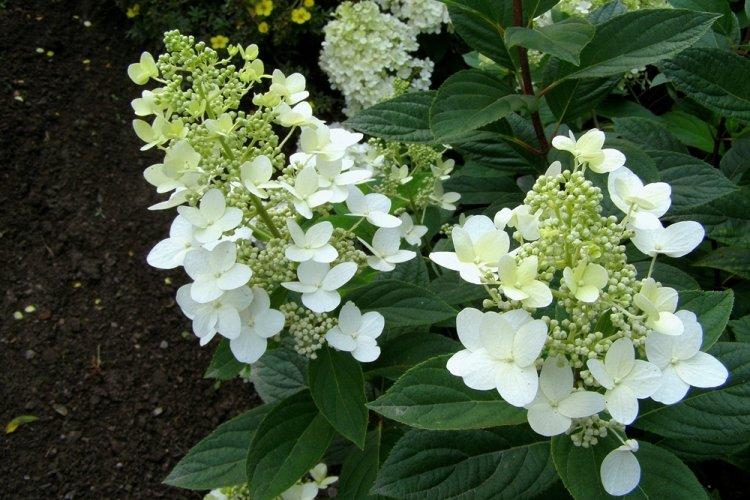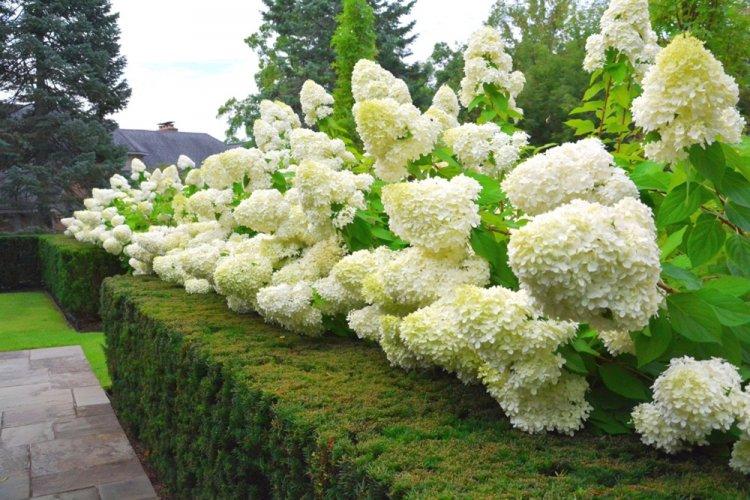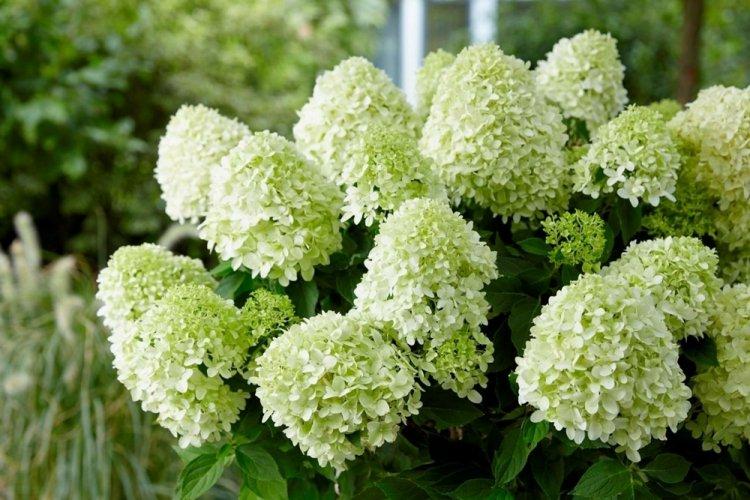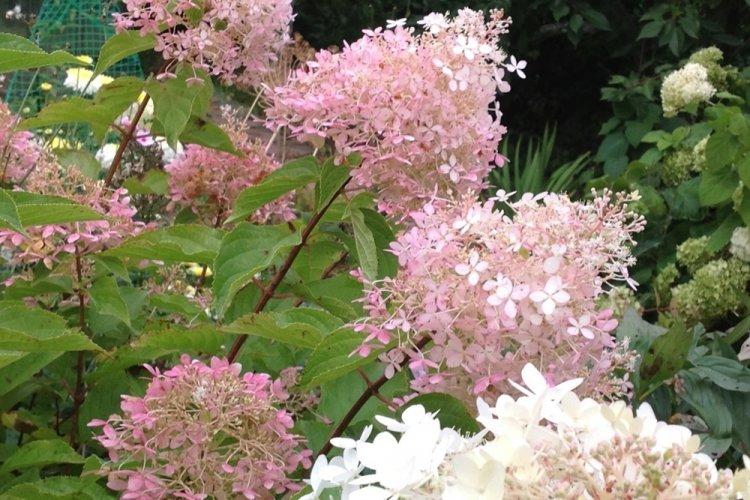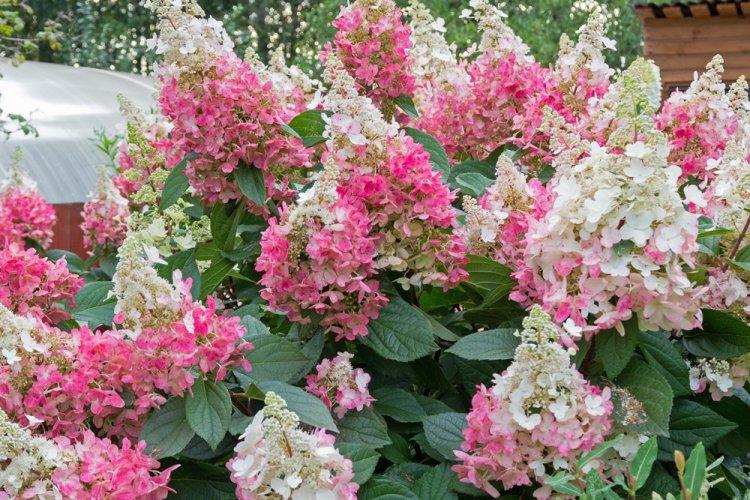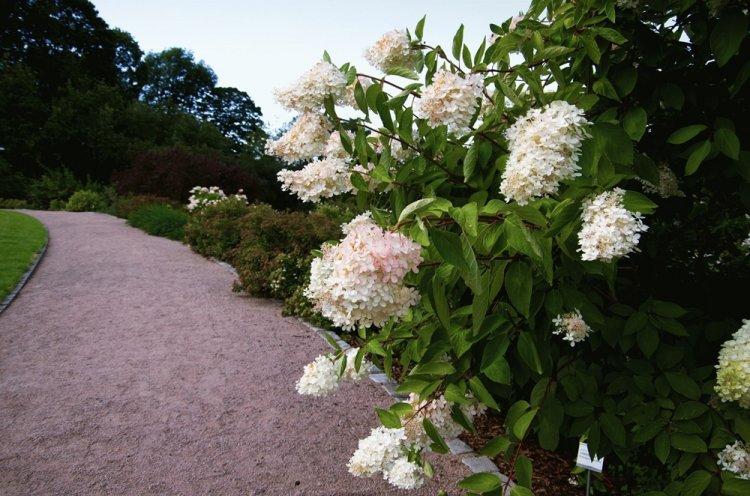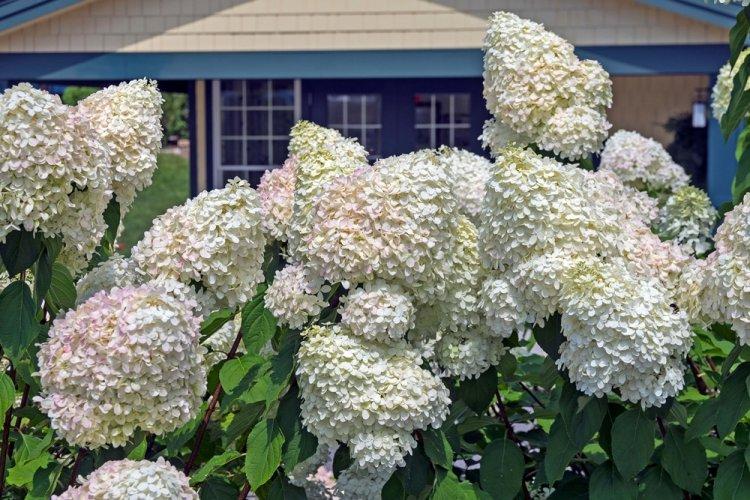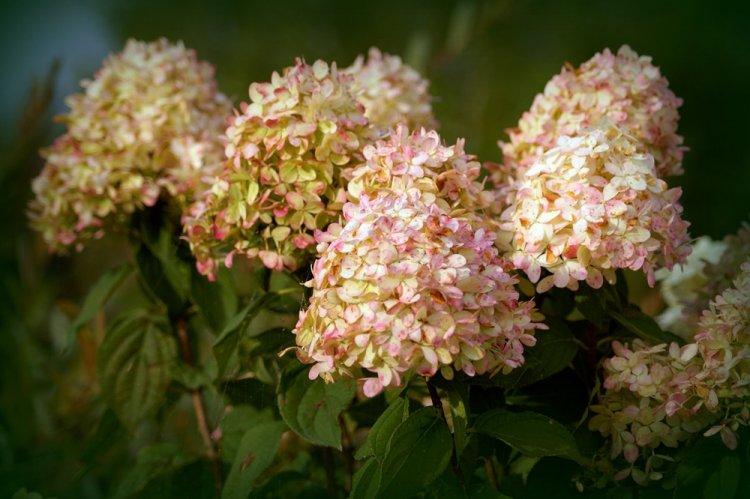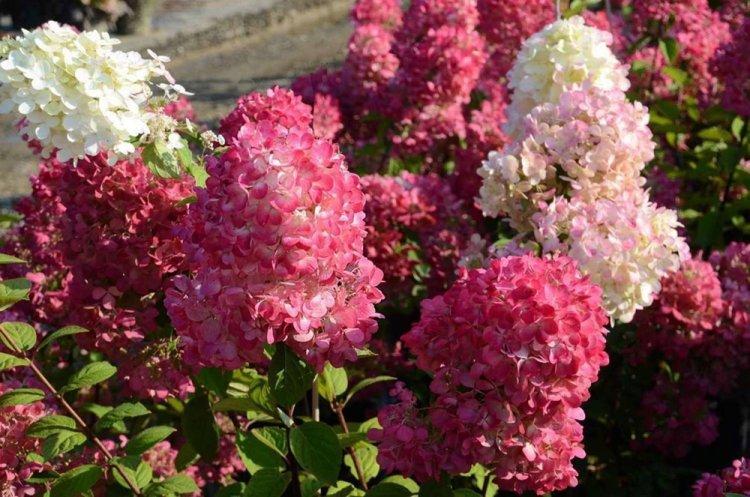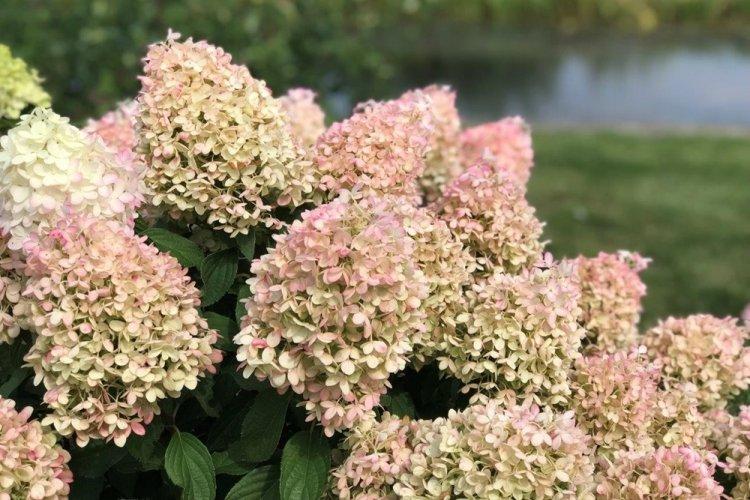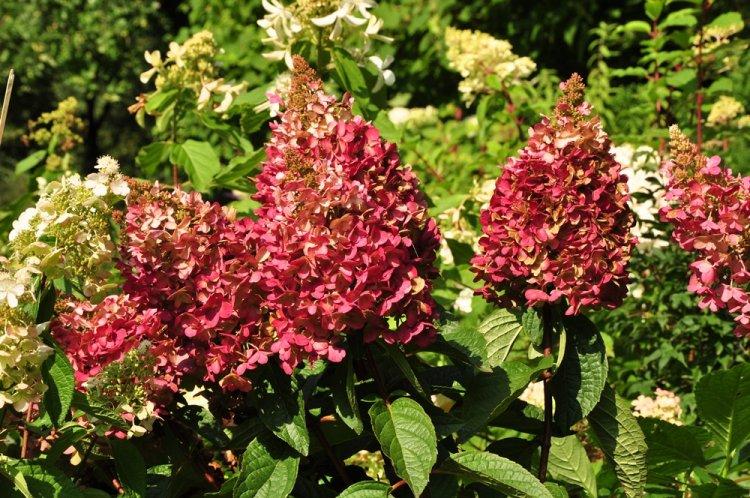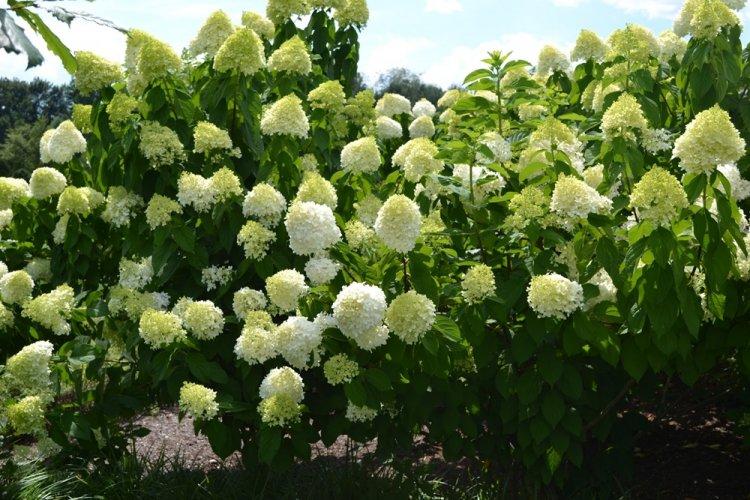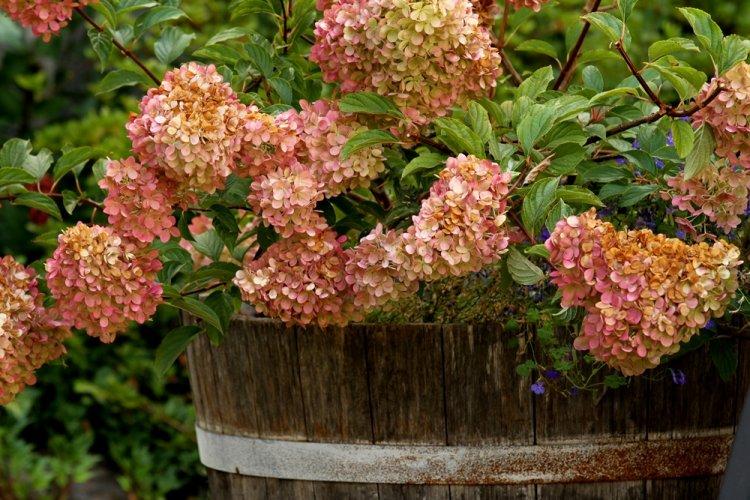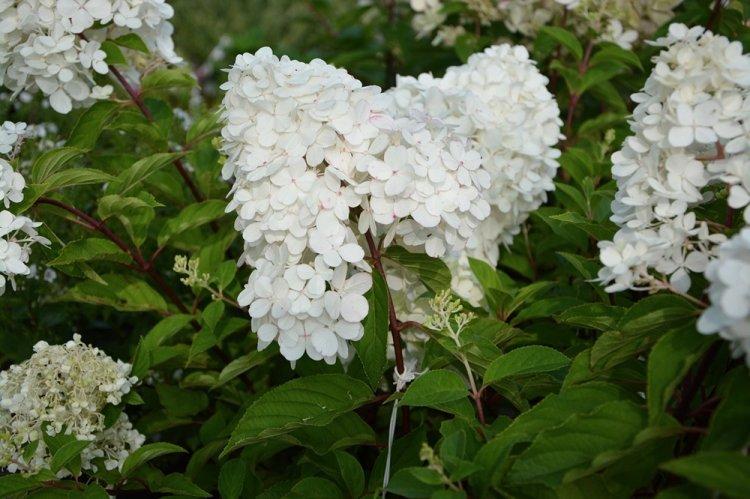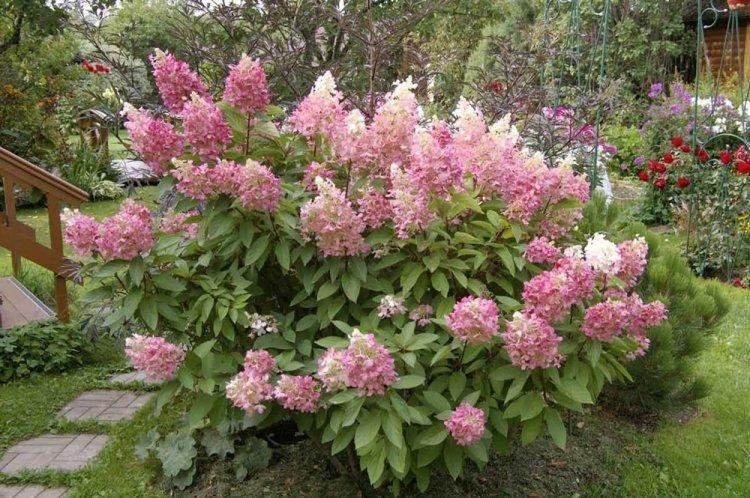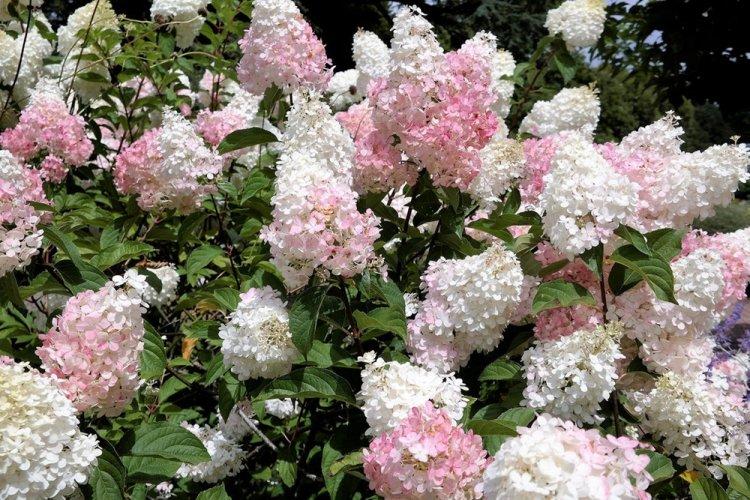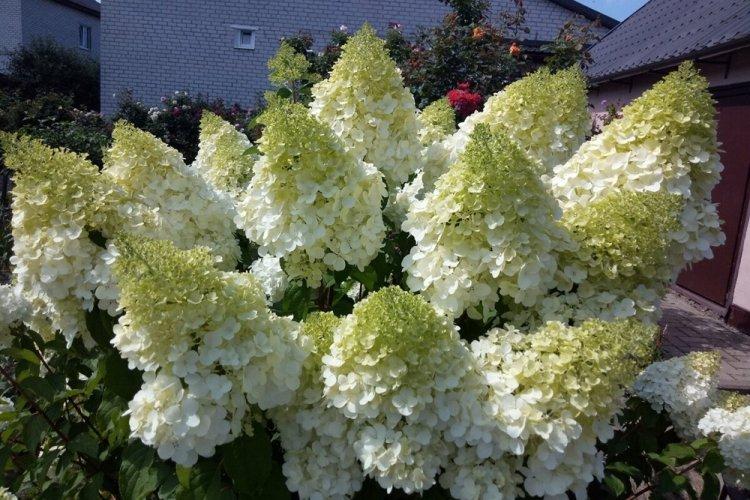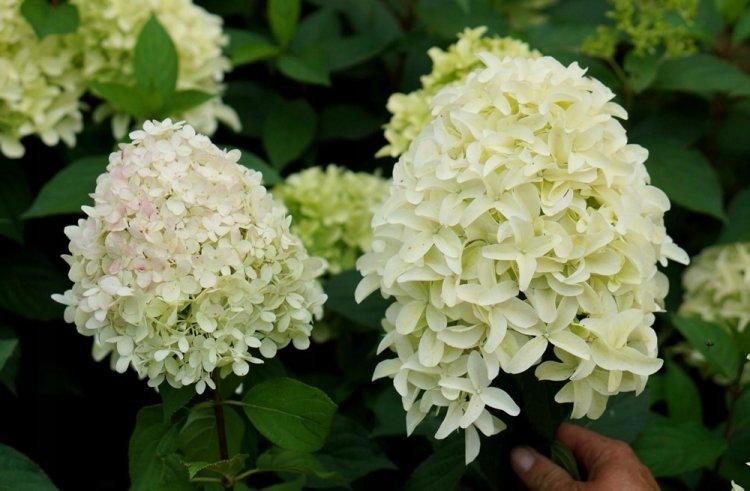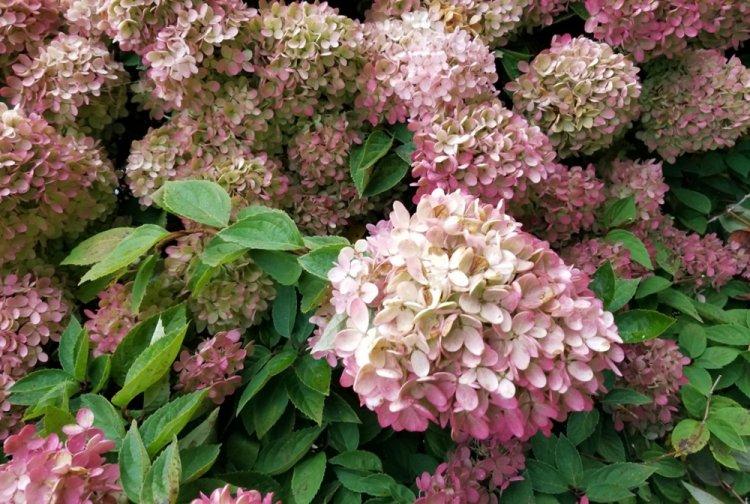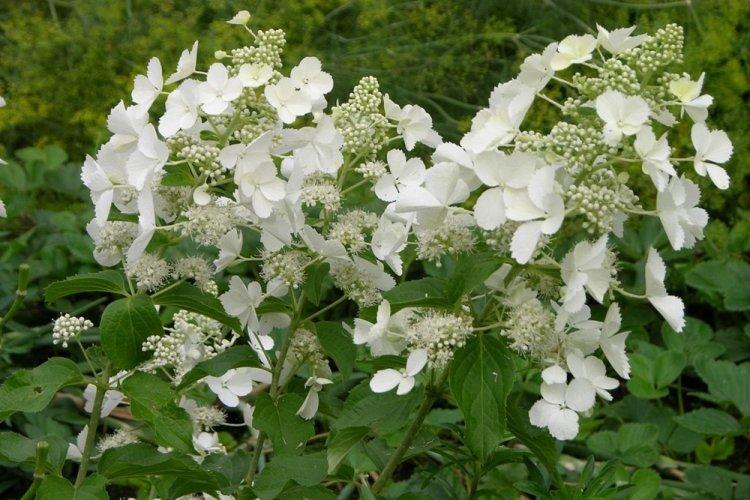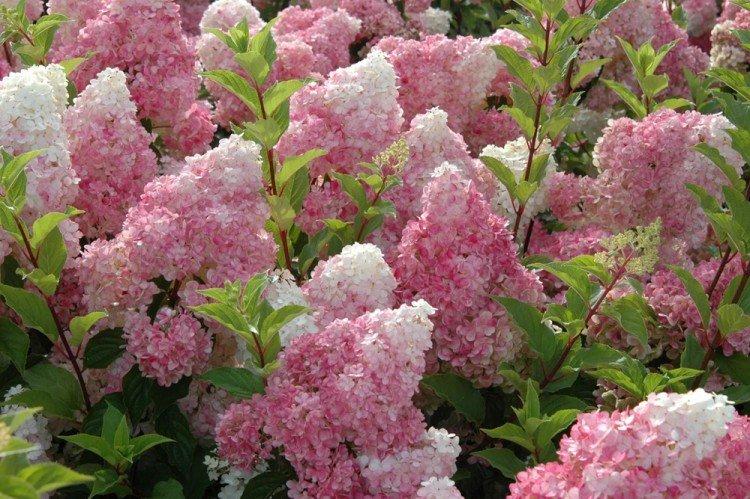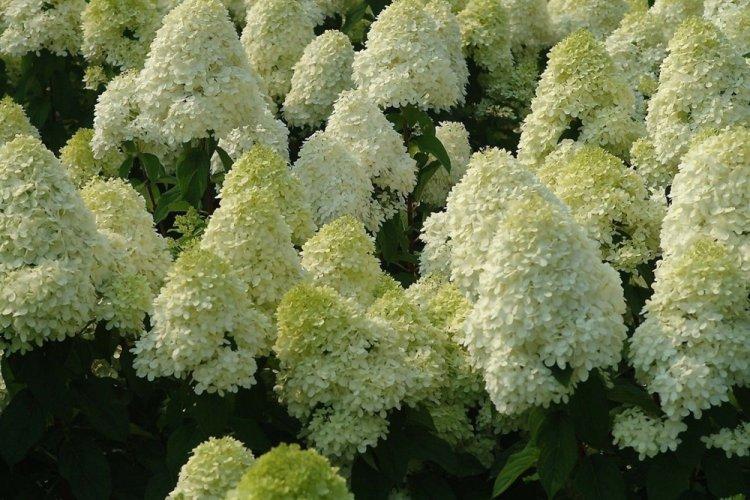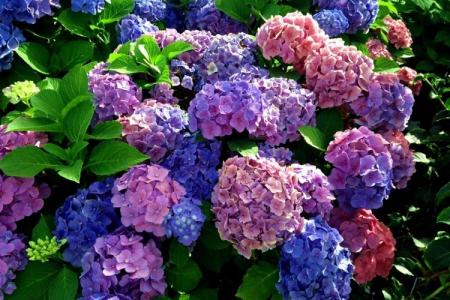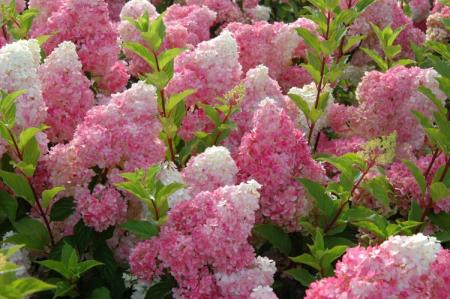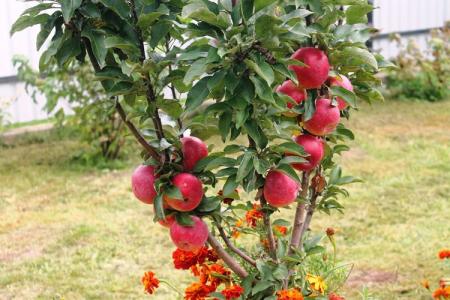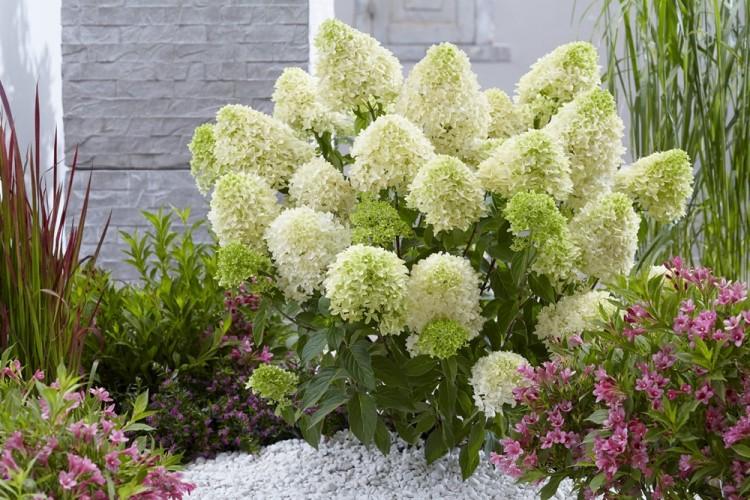
Spectacular and bright panicle hydrangea has adorned ancient gardens for centuries, but then it was undeservedly forgotten. And here she again, at the peak of popularity, pleases flower growers with beauty and varietal diversity! We will tell you how the panicle hydrangea differs from the garden hydrangea, what it is and how to care for it!
general information
Do not confuse the panicle hydrangea with the garden hydrangea, which blooms with lush pink caps. And the point is not only in the different shape of the inflorescences, but also in the fact that the paniculata will easily survive the winter in our latitudes! Its frost-resistant varieties can withstand frosts down to -25 degrees, if you choose the right landing site!
The second unique feature of the panicle hydrangea is in its flowering time. It decorates the garden when most of the summer species have already faded, and the autumn ones are not planning to bloom yet. Different varieties delight with lush inflorescences from mid-summer to mid-autumn.
Panicle hydrangeas differ precisely in the configuration of the inflorescences. Each panicle consists of two types of flowers: sterile large and fertile small. Large ones look powerful, lush and dense, while small ones look more refined and graceful. This amazingly complements the variety of shades: white alone - dozens of varieties.
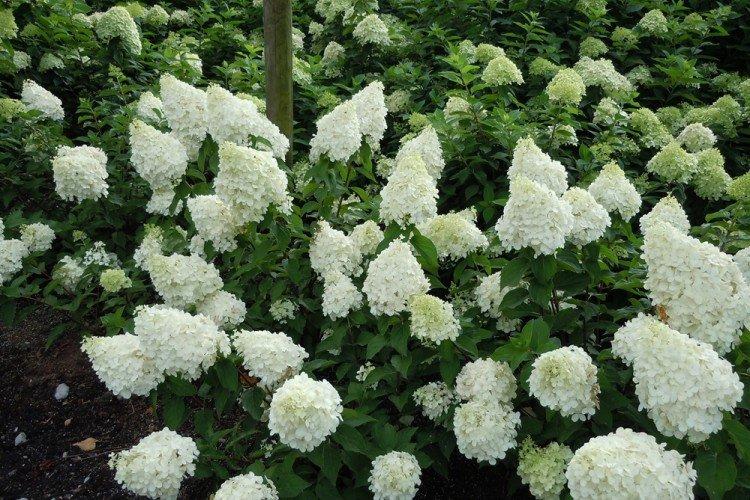
Panicle hydrangea varieties
Externally, the varieties of panicle hydrangeas are very different, ranging from the shape of the bush to the shape and color of the inflorescences. There are so many mixed species and hybrids, so you can find an option for any yard. For example, large, lush varieties are good for a dense fairy garden, and small, low ones for curbs.
Hydrangea paniculata Grandiflora
Creamy white hydrangea with wide cone-shaped inflorescences of medium size - 20-30 cm. Towards autumn, it changes its color to delicate pink. The shrub stretches up to 3 meters and stands out against the background of other white varieties with a delicate warm shade.
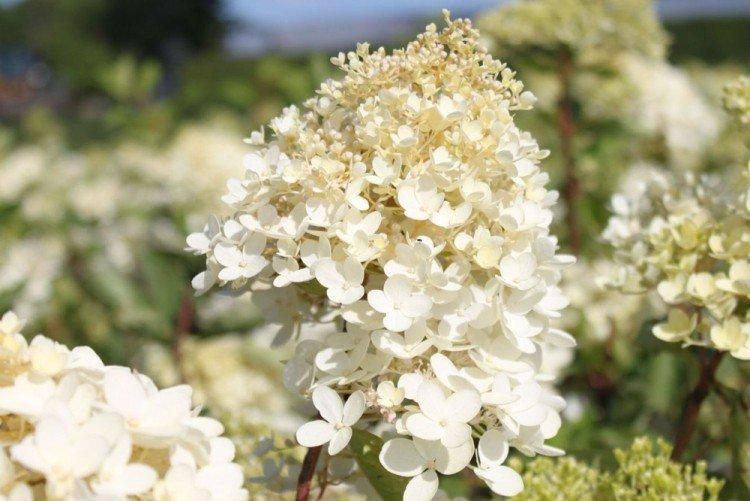
Hydrangea paniculata Floribunda
The classic white hydrangea, with proper care, stretches up to 2 meters. It is distinguished by large shirokokonicheskie inflorescences up to 40 cm in size. This is the same case, classic for paniculate varieties, with two types of flowers - sterile and fertile.
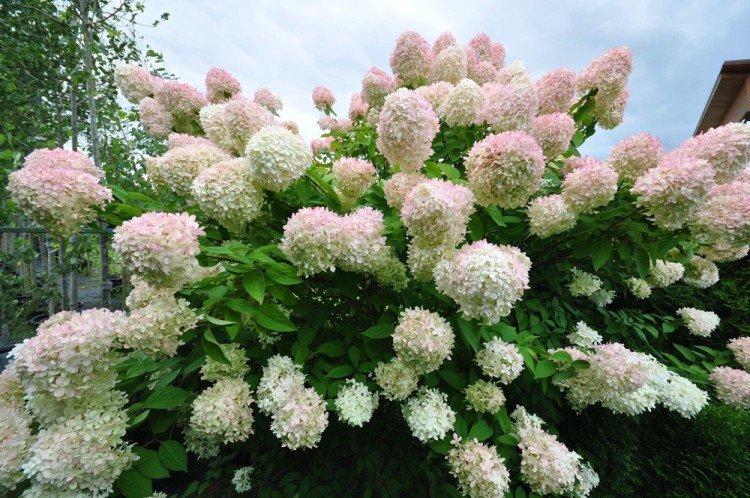
Hydrangea paniculata Limelight
This is an unusual variety of a delicate light green hue, which gradually fades towards autumn. Large inflorescences up to 30 cm in size crown the shrub later than others - until October. Hydrangea grows up to 2.5 m and is delightful to combine with white and pink varieties.
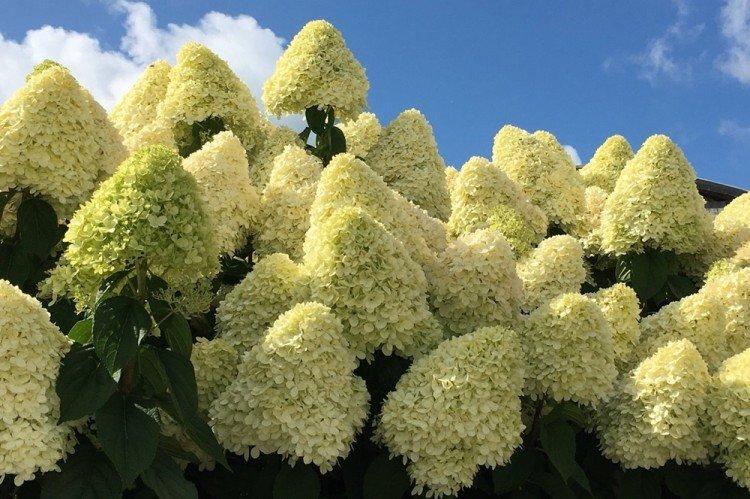
Hydrangea paniculata Mega Mindy
Beautiful red-pink inflorescences bloom at the end of July. This variety does not bloom for long compared to other types of panicle hydrangea. But it is appreciated for its large and beautiful conical inflorescences on relatively compact bushes - up to 1.8 m.
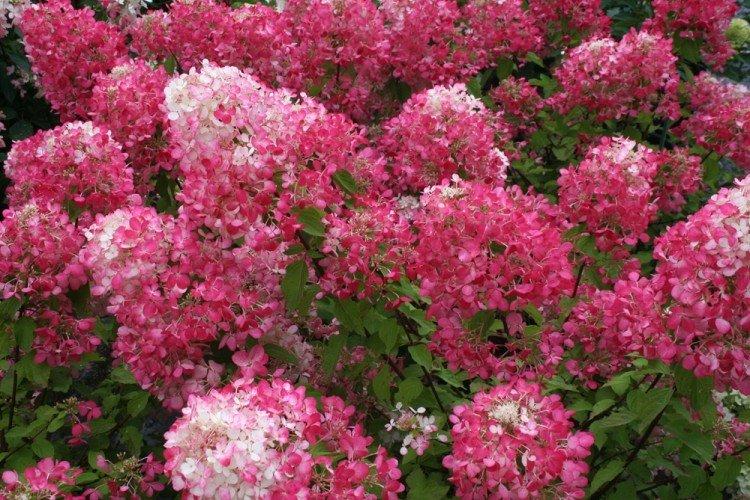
Hydrangea paniculata Magic Fire
The pink-red hydrangea shade of the Magic Fire really looks magical. This is a rather compact paniculate variety with a shrub height of up to 1.5 m. The size of graceful cone-shaped inflorescences is only up to 15 cm, but the flowers on them are large.
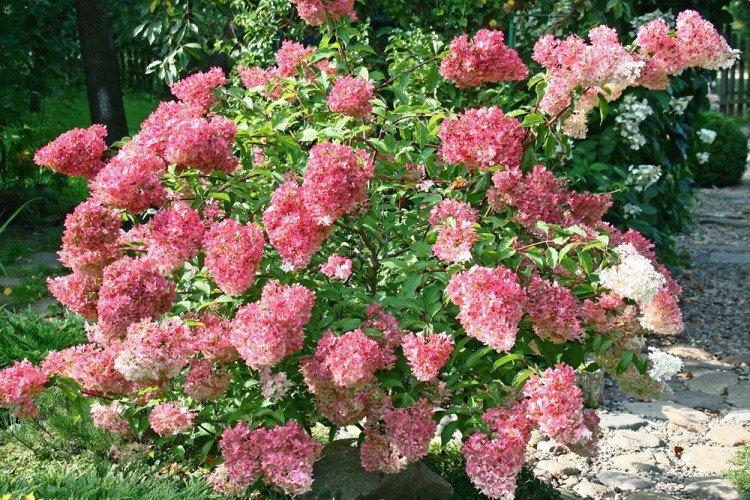
Hydrangea paniculata Pink Diamond
This is one of the most popular pink varieties of panicle hydrangea, the name of which fully reflects its essence and appearance. At first, neat conical inflorescences up to 20 cm in size bloom white, and soon turn pink to a bright saturated shade. Pink Diamond is a late variety that blooms until October.
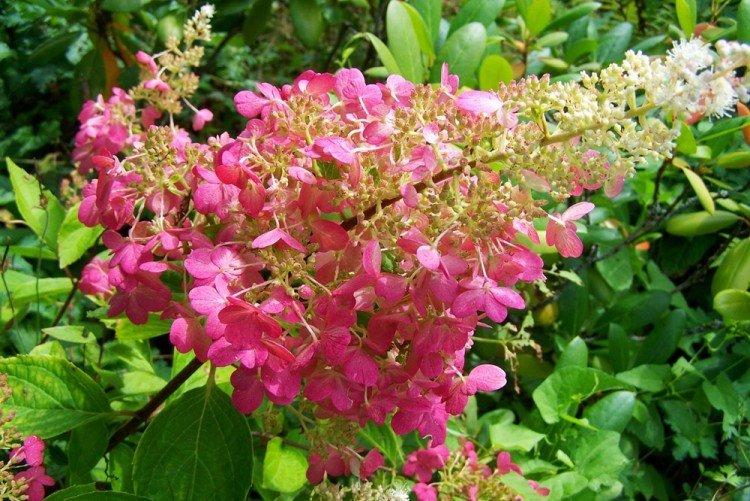
Hydrangea paniculata Silver Dollar
An unusual white variety pleases with a delicate creamy shade, which gradually turns pink towards October. Inflorescences up to 25 cm in size look interesting and impressive. They have a shape that is not quite typical for panicle hydrangea - slightly rounded. Tall shrubs occasionally grow to a real tree of 3-4 m.
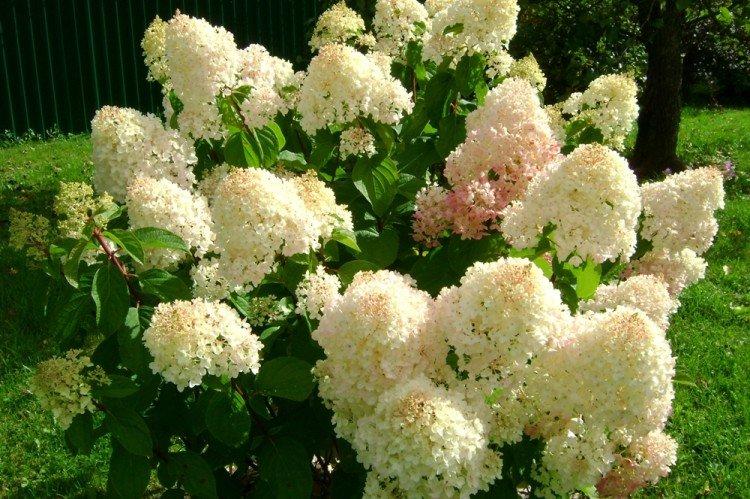
Hydrangea paniculata Unique
The unique name of the variety fully reflects its unique essence, because during flowering, small and delicate white flowers change their shade to intense red. This hydrangea has large and wide inflorescences up to 25 cm in size, and it blooms throughout the second half of summer.
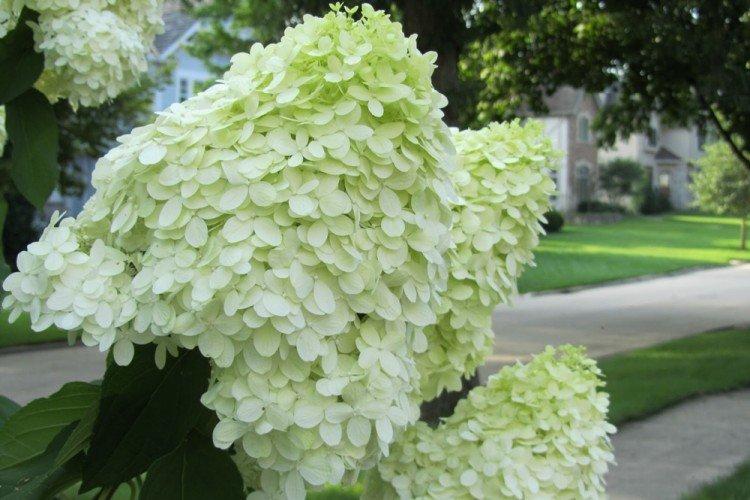
Hydrangea paniculata Weems Red
A rare changeable variety changes color from cream to pink, and by September - to wine. Weems Red blooms in large conical inflorescences earlier than most other species - in July, and fades towards the end of September.
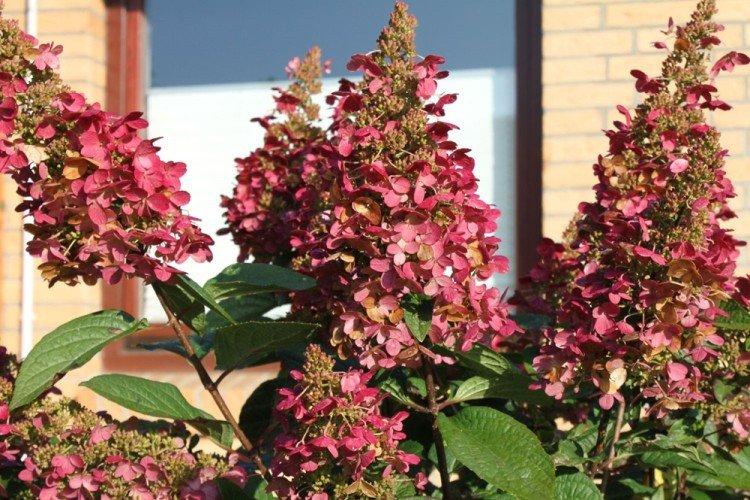
Care for panicle hydrangea
In our latitudes, panicle hydrangea is valued for its amazing winter hardiness and unpretentiousness. Combined with spectacular beauty and variety, this rightfully gives her the title of the real queen of the garden. It is planted in summer cottages and used in complex landscape design.
Temperature
Panicle hydrangeas are so adapted to our climatic conditions that in warm regions you can even root seedlings in September. They endure winter frosts almost without problems, but young shrubs should be covered. First, cover the soil around with mulch, and then with spruce branches and tighten with spunbond or other similar material.
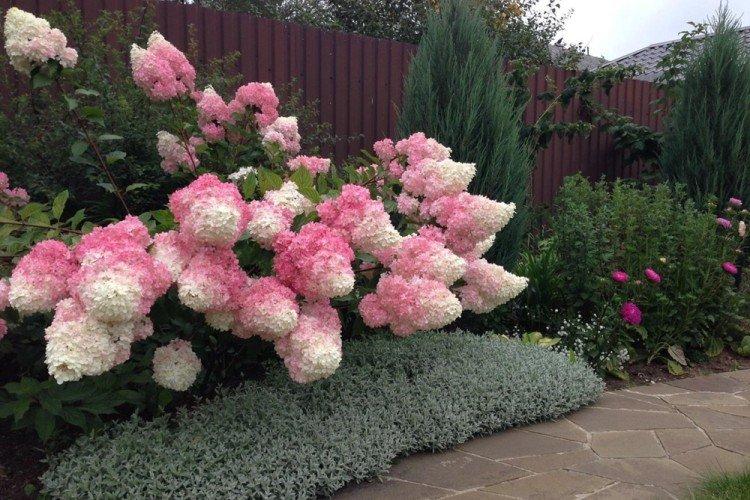
Lighting
Do not forget that the panicle hydrangea is a Far Eastern guest. Therefore, she needs moderate lighting and protection from aggressive ultraviolet radiation. In the constant bright sun, it grows worse and shallower, so choose a light partial shade.
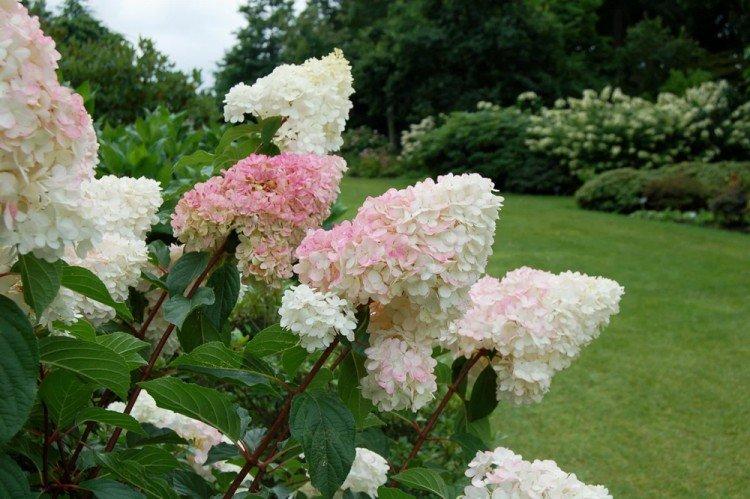
Watering
Lush panicle hydrangea loves moisture very much, therefore it tolerates short-term waterlogging much better than drought. She definitely needs even and moderate watering - about twice a week, 3 buckets under a bush. And remember to mulch the soil around the trunk to trap moisture.

The soil
Panicle hydrangea prefers loamy soils, but sandy soils are not suitable for it. In too dry and clogged soil, it grows poorly, and increased alkalinity leads to the development of chlorosis and other diseases. The acidity can be elevated or neutral, so it does not need to be adjusted.
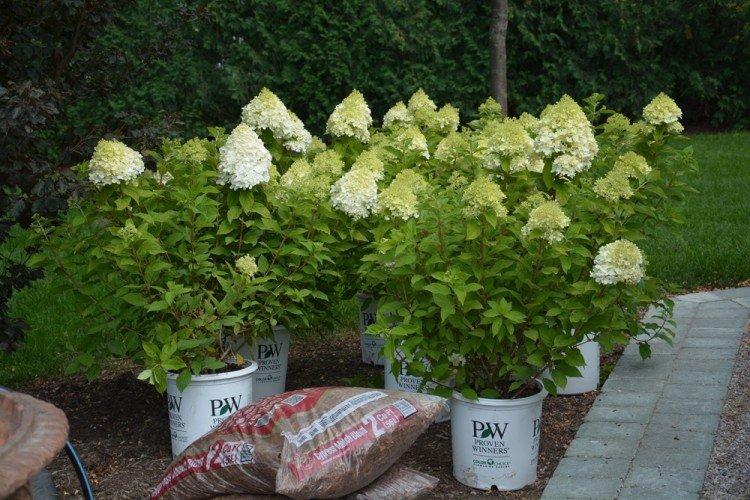
Fertilizers and feeding
Hydrangeas definitely need spring feeding, which is more convenient and best combined with pruning. Choose complex mineral fertilizers in the form of granules, which are applied under the mulch. In the first year, you do not need to feed seedlings in the open field.
The first feeding is carried out immediately after the appearance of the first shoots, the second - at the stage of bud formation for lush flowering. The third is carried out at the end of summer to prepare the shrub for wintering and to lay the base for the next year. But do not overdo it with additives, because if the buds are too lush and heavy, the branches can break.
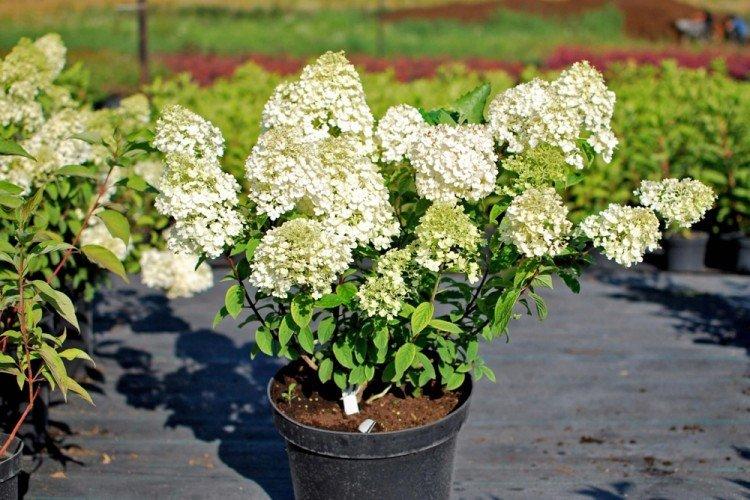
Transplant and reproduction
Panicle hydrangea propagates by cuttings with 3-5 pairs of buds. In order for them to better take root in a new place, use special rooting agents. Fertilize the soil well with compost in advance, and then cover the young seedlings with covering material until the end of the summer heat.
The panicle hydrangea can be propagated by layering, digging in the lower shoot until the buds appear 15-20 cm. Fix it with a support, stones or wire, and constantly spud new shoots. The next year, the layer can be separated from the shrub and transplanted.
Transplanting is carried out in early spring, along with fertilization, pruning and mulching. But you can plant seedlings from containers throughout the season. For planting, you need a hole up to 50 cm deep, and mix the soil with peat, sand and fertilizers.

Pruning
In early spring, young hydrangeas are pruned to maintain shape and grow better. To do this, shorten the shoots, leaving a few strong buds. The first time you have to trim to a full third of the length is a normal natural process.
With age, an annual maintenance pruning is carried out in late autumn or spring before the start of the growing season.Get rid of weak, too thin and too long shoots. Remove frozen branches, branches that interfere with each other or grow inside the crown.
Faded inflorescences do not have to be removed, but for old and weak plants this is a safety measure. Otherwise, in the fall, due to wind and rain, thin shoots can simply break off under the weight of the brushes.

Pest and disease control
Panicle hydrangeas practically do not get sick, and most problems arise only from improper care. These are sunburn, poor soil, lack of minerals, or improper watering regime. Leaves dry, curl or turn black from sudden changes in temperature or humidity.
Of the fungal diseases, hydrangea is affected by powdery mildew, white and gray rot, rust and septoria. Control methods are always about the same - remove damaged areas and treat the shrub with fungicides. Ring spot is a dangerous virus that prevents flowering and leads to the death of the plant, and the main measure of combating it is prevention.
You first need to get rid of leaf aphids mechanically by washing the shrub with water or soapy water. With spider mites, it is more effective to immediately fight with insecticides, but slugs will have to be collected by hand. The most dangerous enemy is a nematode, which is almost impossible to remove, so it must be prevented.
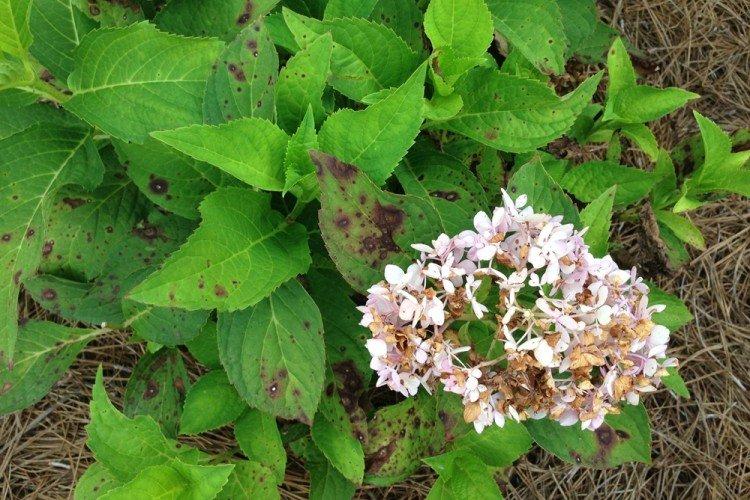
Panicle hydrangea - photo
Panicle hydrangeas are very beautiful and spectacular, and also wonderfully combine with each other or with other shrubs. Just look how good they are in gardens and summer cottages!
